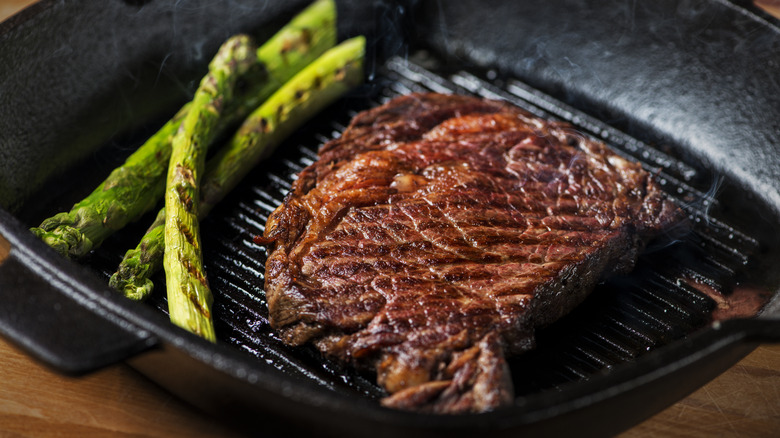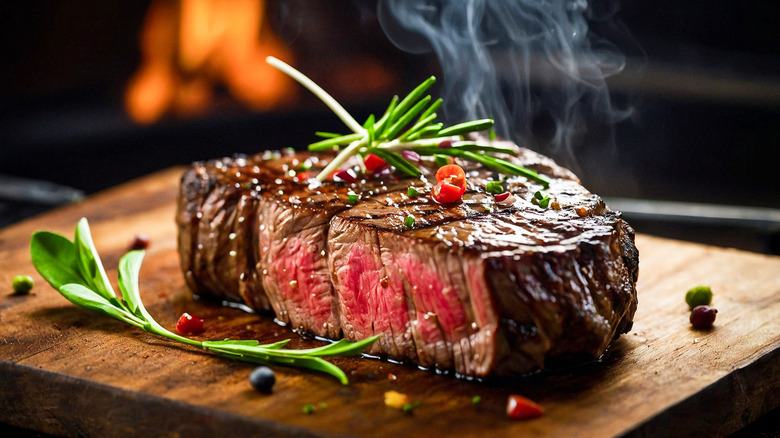Does Searing Meat Actually Lock In Juices?
We've heard time and time again that searing your meat is the key to maintaining juicy bites. Unfortunately, this is actually not the case. Not only is the theory unfounded, it's actually been debunked numerous times over.
Any amount of cooking meat causes it to lose its juices, so it's not that you've been duped, just that the tip itself is incomplete. The 'juices' in question in meat are primarily water and a protein called myoglobin. It's the myoglobin that gives the inside of your steak that signature redness (not blood, for those concerned). As heat is applied, the meat contracts and these liquids are squeezed out. This process goes for all cooking processes, including searing. The thing is, searing is actually one of the better processes for achieving juicy steaks, but not because it 'seals' anything. In fact, it's because searing is done using high heat for a relatively short period of time, and in so doing, not as much liquid is lost.
The root of this myth goes all the way back to 1847, when German chemist Justus von Liebig suggested that the hard crust that searing achieves prevents the juices from seeping out. Even though this is easily debunked, it's possibly upheld anecdotally by the fact that when you only cook meat through searing, you're looking for a rare to medium finish, in which case the meat is juicier than when it's well done on account of shorter cooking times.
Why you should still sear meat
Don't be disillusioned with searing altogether, as there are still a host of benefits to it. Primarily, searing ensures a delicious extra level of flavor thanks to the Maillard reaction. The meat, applied to dry direct heat, forms a brown crust which releases a smoky, almost caramelized flavor profile. This taste is locked in even if you continue cooking the meat another way after searing. In fact, even for a long, slow-cooked brisket, not searing the meat ahead of time is a big mistake that professional chefs urge you to avoid making.
While searing is usually done using dry heat, you can actually use mayonnaise for the job, too, which will give your steak a delicious flavorful exterior. Other benefits of searing include the complexity it brings to the texture of the meat, which shines through even if this was only done briefly. Searing meat also kills surface-level bacteria through the intense heat, so if you like your steak closer to rare, it's an excellent method for food safety, but keep in mind to not puncture the meat ahead of time, as this can push the bacteria inward, mitigating the effects of searing.


